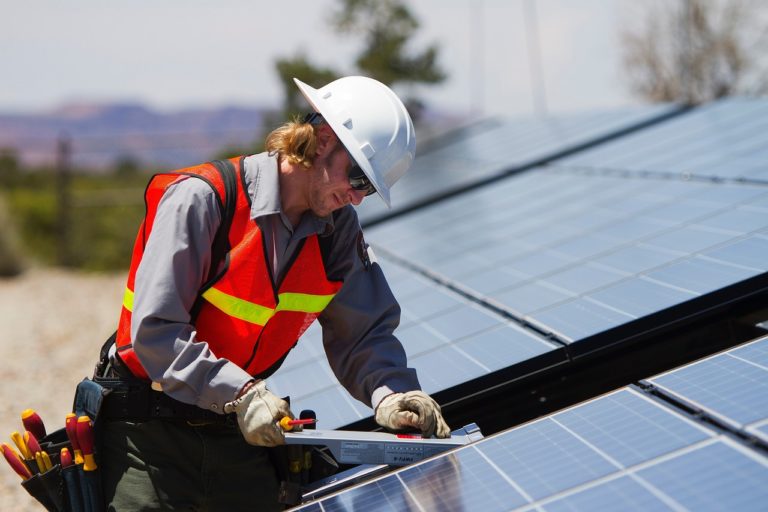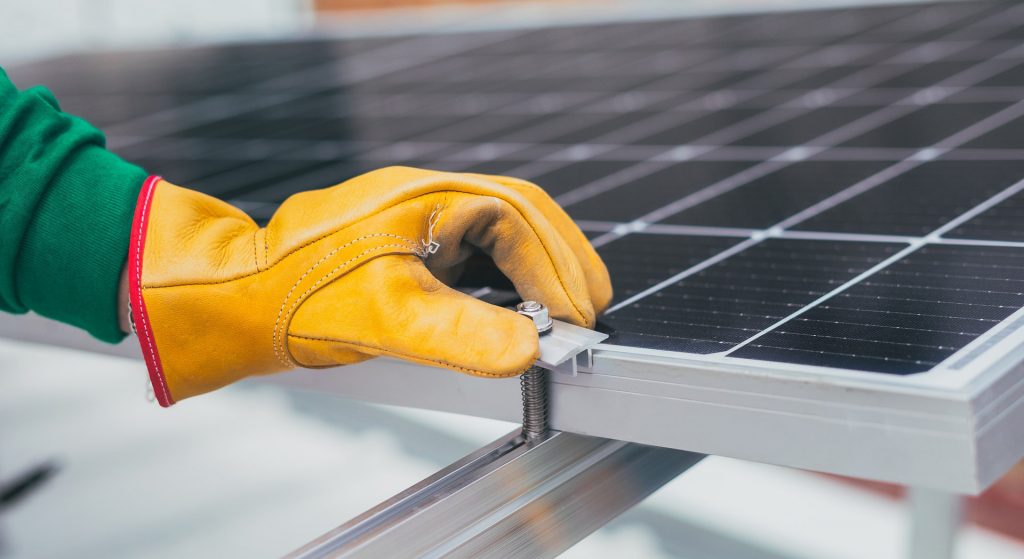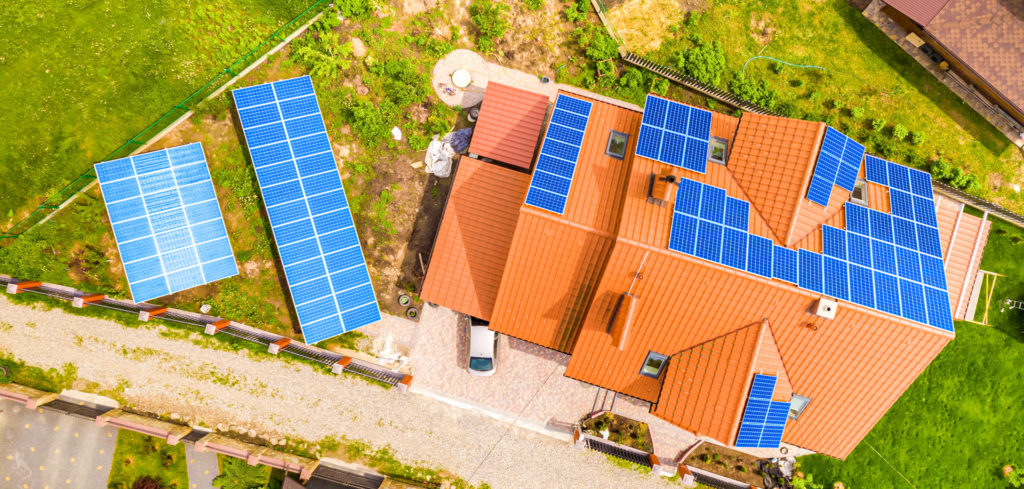The sun is a powerful source of energy that can be used to power our homes and businesses. For many, harnessing the potential of solar energy production has become an attractive way to reduce their carbon footprint and save money on utility bills. But understanding how to maximize solar energy collection means more than just buying panels – it requires knowledge about roof slope and orientation.
So if you’re interested in learning more about how you can take advantage of the sun’s power while also helping to protect our planet, read on as we dive deeper into understanding the role of roof slope and orientation in maximizing solar energy production!
Definition Of Roof Slope And Orientation
Have you ever considered the role of roof slope and orientation in maximizing solar energy production? It’s an often overlooked aspect, but it can have a huge impact on your ability to generate renewable energy! Let’s take a closer look at what this means.
Roof slope refers to the angle or pitch of the roof itself; basically, how steeply sloped it is. This plays a significant part in determining how much sunlight reaches and stays on the surface of your roof. Roof orientation, meanwhile, deals with which direction the roof faces–southward for maximum sun exposure being ideal here. Together these two elements are crucial factors when it comes to getting the most out of your solar panels.
When combined correctly, they provide optimal conditions for harvesting as much free energy from the sun as possible. The key is understanding how best to use them both together depending on where you live and the shape of your home – all so that you can make sure any investment into solar technology pays off properly!
Benefits Of Optimizing Roof Slope And Orientation For Solar Energy
When it comes to maximizing the production of solar energy, two key factors come into play: roof slope and orientation. Roofs that are optimally sloped and oriented can make a big difference when it comes to capturing the sun’s rays and generating as much electricity as possible. Let’s take a look at what makes an ideal roof for solar power generation and why optimizing these features is so important.
For starters, roofs should be pitched between 20 degrees (for more temperate climates) and 40 degrees (in colder climates). This pitch helps ensure that snowfall won’t accumulate on top of the panels, allowing them to capture sunlight during winter months. Additionally, north-facing roofs tend to generate more energy than their east or west-facing counterparts because they receive direct light from sunrise until sundown.
By understanding the role of roof slope and orientation in maximizing solar energy production, homeowners have access to a number of benefits:
* Financial savings – Optimizing your roof for solar power generation can save you money over time by reducing your reliance on traditional energy sources like coal or natural gas;
* Lower utility bills – As you generate more of your own electricity through solar means, your monthly utility bills will decrease;
* Reduced environmental impact – Generating clean renewable energy with less carbon dioxide emissions reduces our collective environmental footprint.
Overall, making sure that your roof has the optimal conditions for producing solar energy can bring about considerable financial savings while helping us all do our part for Mother Nature.
Factors To Consider When Adjusting Roof Slope And Orientation
When it comes to optimizing roof slope and orientation for solar energy production, there are a number of factors you need to consider. To make sure you’re getting the most bang for your buck, let’s take a look at what those key components are:
First off, think about the direction your roof faces in relation to the sun. The angle of incidence—the angle between the incoming sunlight and a line perpendicular to the surface—has an impact on how much solar radiation is received by that surface. That means if your roof isn’t facing towards the equator, then you won’t be able to get as much out of it when it comes time for harvesting sunshine.
It’s also important to keep in mind how steep or shallow your rooftop is; steeper roofs can capture more direct sunlight than flatter ones. On top of this, they tend to shed snow better during winter months which could help increase efficiency even further! And lastly, don’t forget about any nearby obstructions like trees or buildings that might cast shadows over your photovoltaic system throughout certain parts of the day.
How To Calculate Solar Gain From Roof Slope And Orientation
When it comes to understanding the role of roof slope and orientation in maximizing solar energy production, one thing is certain: calculating solar gain is key. To get an idea of how much sunlight your roof will receive, there are a few factors you need to consider.
First off, the angle of the roof’s slope affects how much direct sunlight hits it. A steeper angle means more sun exposure; however, this can also mean too much heat during summer months. It’s important to find the right balance for your location and climate. Secondly, direction matters – south-facing roofs tend to be ideal for most regions as they’ll capture maximum annual sunshine hours throughout the year. Lastly, shading from trees or other structures may reduce direct sunlight on your roof even if its facing south and has a good pitch – so make sure to check before taking any action!
To calculate solar gain from these adjustments effectively, here are a few tips:
* Calculate the total square feet of the exposed surface area that gets direct sunlight daily by multiplying length times width.
* Determine what percentage of those square feet receives full sun versus partial shade over different seasons.
* Estimate potential gains based on average monthly temperatures and local weather conditions using online calculators like PV Watts Calculator or SolarGaps Calculator.
By following these steps and weighing up all available options carefully, you can ensure that any changes made to your roof’s slope or orientation maximizes its solar energy production potential!
Strategies For Maximizing Solar Energy Production With Roof Slope And Orientation
When it comes to maximizing solar energy production, roof slope and orientation can be two key factors. But how exactly can you use them for maximum efficiency? In this article, we’ll explore strategies for making the most of your roof’s potential when it comes to solar gain.
In terms of optimizing solar gain with roof angle (or pitch), there are some general guidelines you should follow: If climate allows, try setting up an array of low-angle arrays; these tend to perform well during winter months due to their ability to capture more direct sunlight than higher angles. On the flip side, if summer heat is a concern then high-angle arrays may be preferable as they reduce absorption rates while also allowing air flow underneath – helping maintain cooler temperatures around your home or building. Ultimately though, finding what works best for each individual situation requires trial and error so don’t be afraid to experiment!
Potential Challenges With Roof Slope And Orientation Adjustment
Adjusting a roof’s slope and orientation to maximize solar energy production can be an effective strategy, but it isn’t always easy. There are some potential challenges that may prevent homeowners from achieving the desired results.
One of the biggest issues is cost. Changing the angle of your roof or re-orienting it to face southward can be expensive, depending on how much work needs to happen. Additionally, in many areas building codes dictate what types of changes you can make to your home’s structure without needing additional permits or inspections—so even if you have the money, there might not be legal options available for optimizing your roof for solar power.
Finally, certain parts of your house may prohibit any alterations at all – like skylights or dormers which are built into the pitch of the roof itself; they’ll limit what kind of adjustments you’re able to make. Ultimately, understanding these potential obstacles ahead of time will help you plan better and avoid frustrations later down the line when attempting to optimize your roof for solar energy production.
Summary Of Benefits And Challenges Of Adjusting Roof Slope And Orientation For Solar Energy
It’s no secret that adjusting roof slope and orientation could be beneficial for solar energy production. But what are the advantages and drawbacks of this adjustment? Let’s take a look at the benefits and challenges that come with altering roof slope and orientation to maximize solar energy output.
The most obvious advantage is the increased efficiency in producing solar energy when roofs have an optimal angle or direction relative to the sun. This can translate into lower costs since more electricity can be generated from smaller systems, making them ideal for residential applications. Additionally, by taking into account factors such as shading from nearby structures, buildings, trees and other obstacles, it’s possible to get even better results from these modifications.
On the flip side, there may be some difficulties associated with changing the angle or orientation of your roof, particularly if you’re living in an area where local building codes don’t allow for certain adjustments. Furthermore, depending on how complex or difficult it is to make changes to the existing structure, installation costs could become expensive – something homeowners should consider before investing in any changes.
Adjusting roof slope and orientation certainly has its pros and cons – but when done correctly it can significantly improve solar energy production. Homeowners just need to weigh all their options carefully so they can reap maximum benefit without compromising safety or breaking budget constraints.




